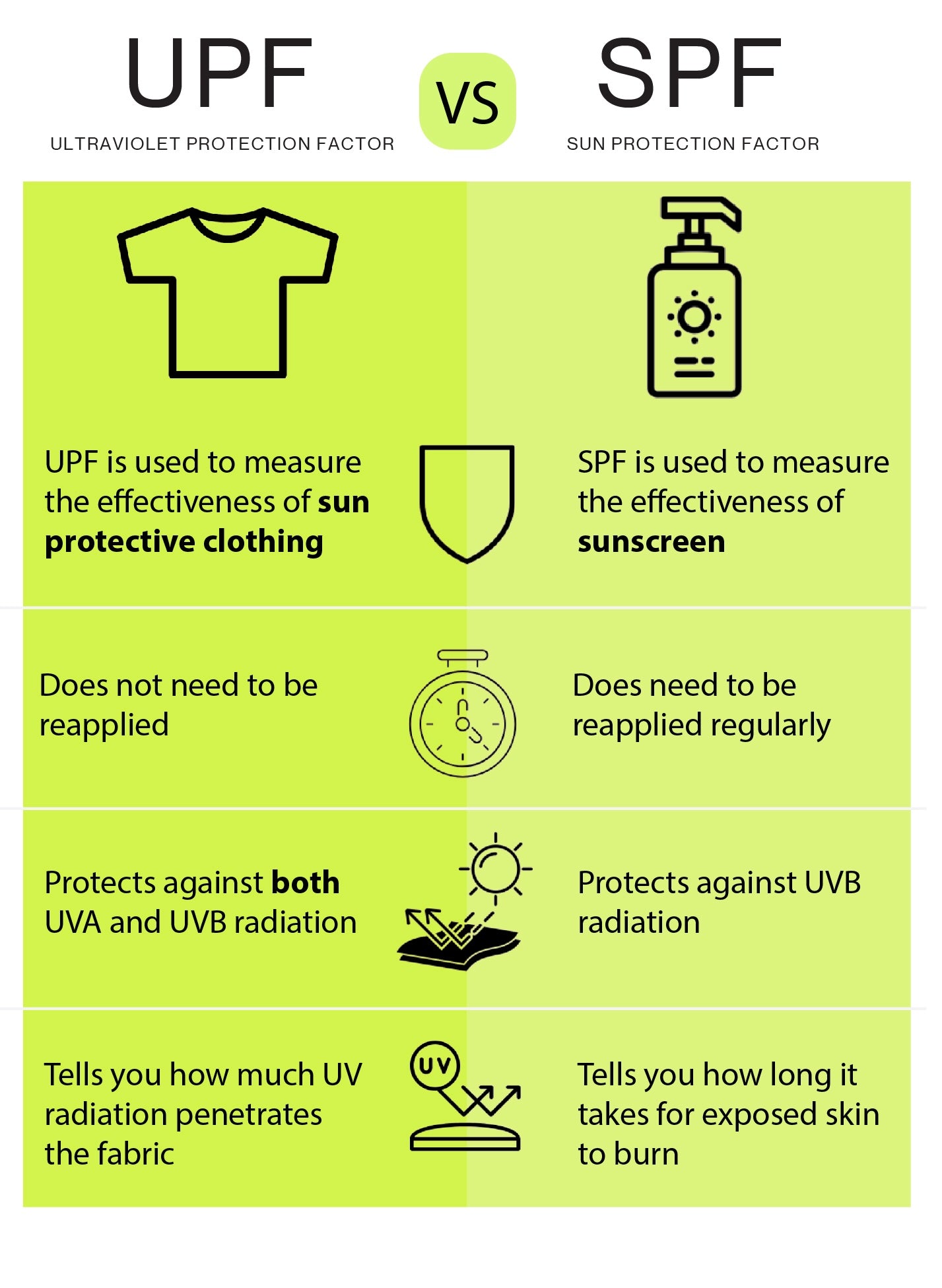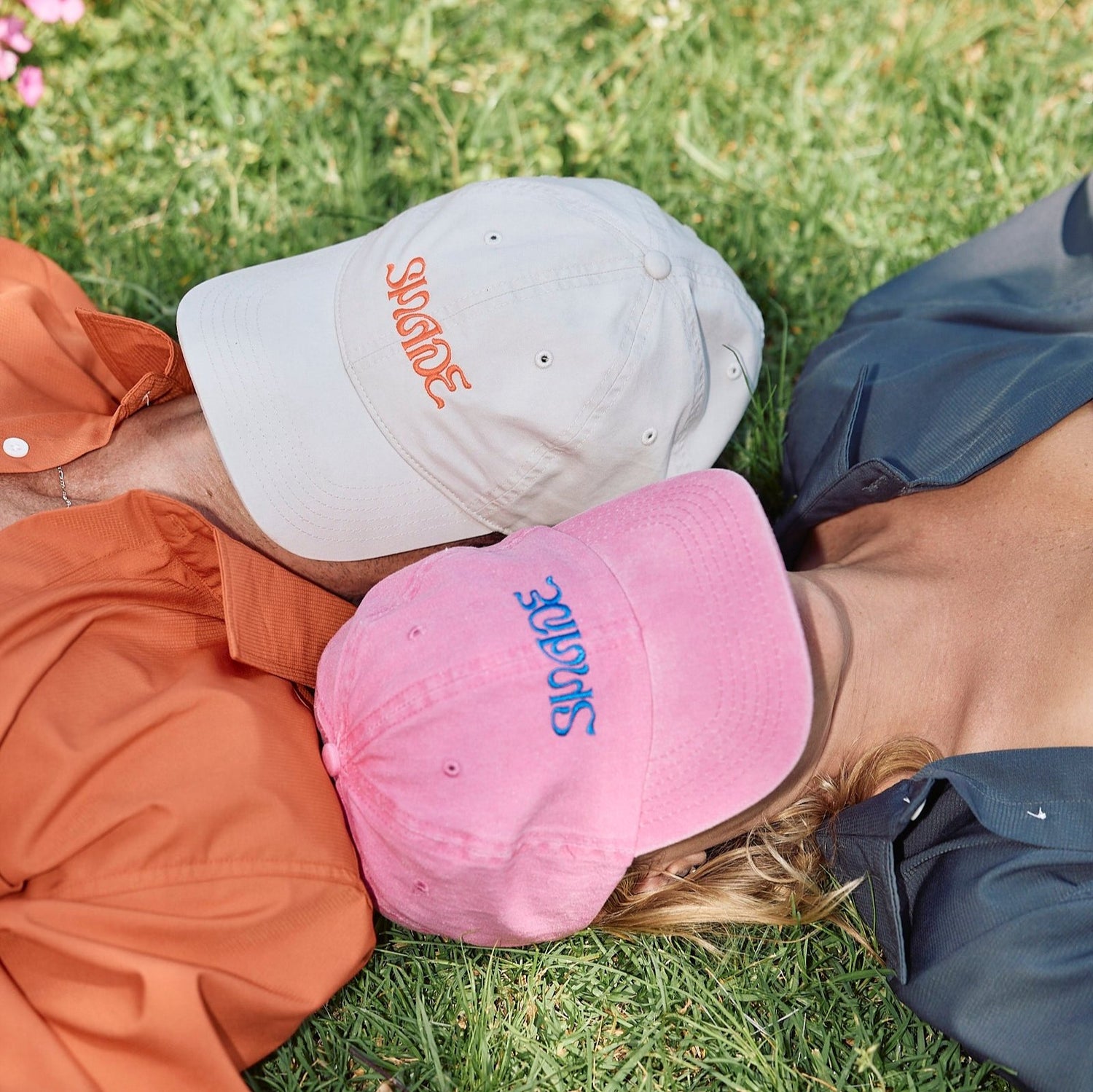
UPF Explained
UPF is the fabric version of SPF. While SPF measures how well sunscreen blocks UVB rays, UPF measures how well fabric blocks both UVA and UVB, so it’s more comprehensive.
About 95% of UV rays that hit the ground are UVA. UVA rays penetrate deeper into your skin, responsible for premature aging and skin cancer. The rest are UVB, which have more energy, causing sunburn by damaging the outer skin layers. UVC rays are potentially the most harmful but luckily don't make it through the atmosphere to reach earth.

Back in the '90s, an Aussie agency caught onto this and came up with the Ultraviolet Protection Factor (UPF) to measure how well fabric blocks UV rays. Every fabric has a UPF rating, but to be labelled as UV-protective, it needs to be tested in a lab.

Any clothing is better than bare skin, but a standard white cotton t-shirt provides the same protection as SPF 5 sunscreen, according to The Skin Cancer Foundation. This means the majority of UV rays are still reaching your skin, and if the cotton fabric is wet, the protection drops even more.

Fabrics are made from tiny fibres woven together, and under a microscope you can see gaps where ultraviolet (UV) rays can pass through to reach your skin. The tighter the weave, the fewer UV rays get through. For example, denim is tightly woven and offers great protection, with jeans having a UPF rating of 1700, though not exactly practical in hot weather. Looser weave fabrics like linen offer much less protection.

Clothing is often a more reliable form of sun protection than sunscreen because it creates a physical barrier. Sunscreen can be applied incorrectly or wash off with sweat or water, but once you're wearing UPF-rated clothing, you're protected. For long days outside, whether it's a hike, a beach day, or a boat trip, sun-protective clothing is an easy and effective solution.
